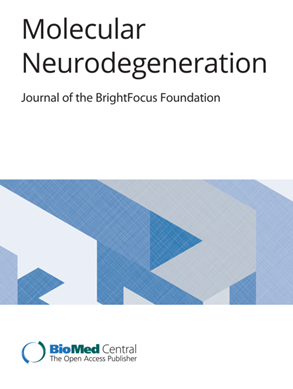Lewy body diseases and the gut
IF 17.5
1区 医学
Q1 NEUROSCIENCES
引用次数: 0
Abstract
Gastrointestinal (GI) involvement in Lewy body diseases (LBDs) has been observed since the initial descriptions of patients by James Parkinson. Recent experimental and human observational studies raise the possibility that pathogenic alpha-synuclein (⍺-syn) might develop in the GI tract and subsequently spread to susceptible brain regions. The cellular and mechanistic origins of ⍺-syn propagation in disease are under intense investigation. Experimental LBD models have implicated important contributions from the intrinsic gut microbiome, the intestinal immune system, and environmental toxicants, acting as triggers and modifiers to GI pathologies. Here, we review the primary clinical observations that link GI dysfunctions to LBDs. We first provide an overview of GI anatomy and the cellular repertoire relevant for disease, with a focus on luminal-sensing cells of the intestinal epithelium including enteroendocrine cells that express ⍺-syn and make direct contact with nerves. We describe interactions within the GI tract with resident microbes and exogenous toxicants, and how these may directly contribute to ⍺-syn pathology along with related metabolic and immunological responses. Finally, critical knowledge gaps in the field are highlighted, focusing on pivotal questions that remain some 200 years after the first descriptions of GI tract dysfunction in LBDs. We predict that a better understanding of how pathophysiologies in the gut influence disease risk and progression will accelerate discoveries that will lead to a deeper overall mechanistic understanding of disease and potential therapeutic strategies targeting the gut-brain axis to delay, arrest, or prevent disease progression.路易体和肠道疾病
路易体病(lbd)的胃肠道(GI)参与自詹姆斯·帕金森(James Parkinson)最初描述患者以来一直被观察到。最近的实验和人体观察研究提出了致病性α -突触核蛋白(-syn)可能在胃肠道中发展并随后扩散到易感大脑区域的可能性。疾病中产生的细胞和机制起源正在深入研究中。实验LBD模型暗示了内在肠道微生物群、肠道免疫系统和环境毒物的重要贡献,它们作为胃肠道病理的触发和调节剂。在这里,我们回顾了将胃肠道功能障碍与lbd联系起来的主要临床观察。我们首先概述了GI解剖学和与疾病相关的细胞群,重点介绍了肠上皮的光感应细胞,包括表达 -syn并与神经直接接触的肠内分泌细胞。我们描述了胃肠道内与常驻微生物和外源性毒物的相互作用,以及这些相互作用如何直接促进了syn病理以及相关的代谢和免疫反应。最后,强调了该领域的关键知识空白,重点关注在首次描述lbd的胃肠道功能障碍约200年后仍然存在的关键问题。我们预测,对肠道病理生理学如何影响疾病风险和进展的更好理解将加速发现,这将导致对疾病的更深入的整体机制理解和针对肠-脑轴的潜在治疗策略,以延缓、阻止或预防疾病进展。
本文章由计算机程序翻译,如有差异,请以英文原文为准。
求助全文
约1分钟内获得全文
求助全文
来源期刊

Molecular Neurodegeneration
医学-神经科学
CiteScore
23.00
自引率
4.60%
发文量
78
审稿时长
6-12 weeks
期刊介绍:
Molecular Neurodegeneration, an open-access, peer-reviewed journal, comprehensively covers neurodegeneration research at the molecular and cellular levels.
Neurodegenerative diseases, such as Alzheimer's, Parkinson's, Huntington's, and prion diseases, fall under its purview. These disorders, often linked to advanced aging and characterized by varying degrees of dementia, pose a significant public health concern with the growing aging population. Recent strides in understanding the molecular and cellular mechanisms of these neurodegenerative disorders offer valuable insights into their pathogenesis.
 求助内容:
求助内容: 应助结果提醒方式:
应助结果提醒方式:


